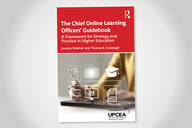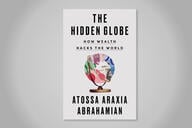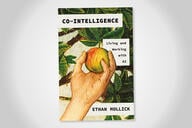You have /5 articles left.
Sign up for a free account or log in.
Three predictions about how changes in the curricular mediums will alter the learning process.
Prediction 1: Curricular content will be consumed in shorter chunks, across more diffuse times, and in multiple places.
Prediction 2: The amount of time any given individual (student) spends consuming curricular content will decrease.
Prediction 3: The total amount of curricular content consumed will increase, as prior "non-students" and "student non-consumers" evolve into curricular consumers.
All of these predictions of course follow Marshall McLuhan's statement that "the medium is the message," and were inspired by Monday's NYTimes story "Audiences, and Hollywood, Flock to Smartphones."
The article begins,
"It might be hard to imagine watching “The Office” on a screen no bigger than a business card. But tens of thousands of people — by the most conservative estimate — are already doing just that."
Media is moving to the mobile device. Perhaps I'm particularly attuned to this trend, as I currently consume most of my media on my Touch.
Why? Because I no longer seem to have time in big blocks, so if I want to watch "The Office" or a TED talk I need to grab the opportunity (by grabbing my Touch with is always with me).
Why? Because I don't want to make a "big commitment" to any one show or movie, and by watching it on my Touch it seems that much easier to stop watching and move to the next thing.
Why? Because firing up a show or a movie on the "big screen" requires that I dominate a whole space, and that everyone else in the room must watch what I watch or leave. With my Touch, I can watch while my wife and kids do whatever they want to do.
The total time spent with curriculum will decrease because the competition for attention is growing. By "curriculum", I mostly mean curricular media - but text could also be included (as text can be consumed by a mobile device). My Netflix cue currently contains 389 movies. My Amazon Wish List has 912 items (mostly books). There is simply lots more great stuff to watch and read on offer. The rise of the long tail has moved the scarcity from content to time. Our students face the same abundance of choice, and the same lack of additional hours to process the supply. Our curricular content operates within an attention marketplace. Colleges and universities are sort of like the big 3 TV networks of old. We were used to getting all the market share, as what else would people watch? Nowadays, we all compete.
I tend to see all this in a positive light (hence prediction #3). Most TV programming has memorably been termed a "vast wasteland", but the mind numbing stupidity of most television is more than balanced out by the pure excellence of shows like The Wire, Deadwood, Sopranos, Big Love etc. etc. The question is not if mobile devices will begin to drive media (and curricular) consumption habits (they will), but how we will leverage these devices to deliver better learning to more people.




